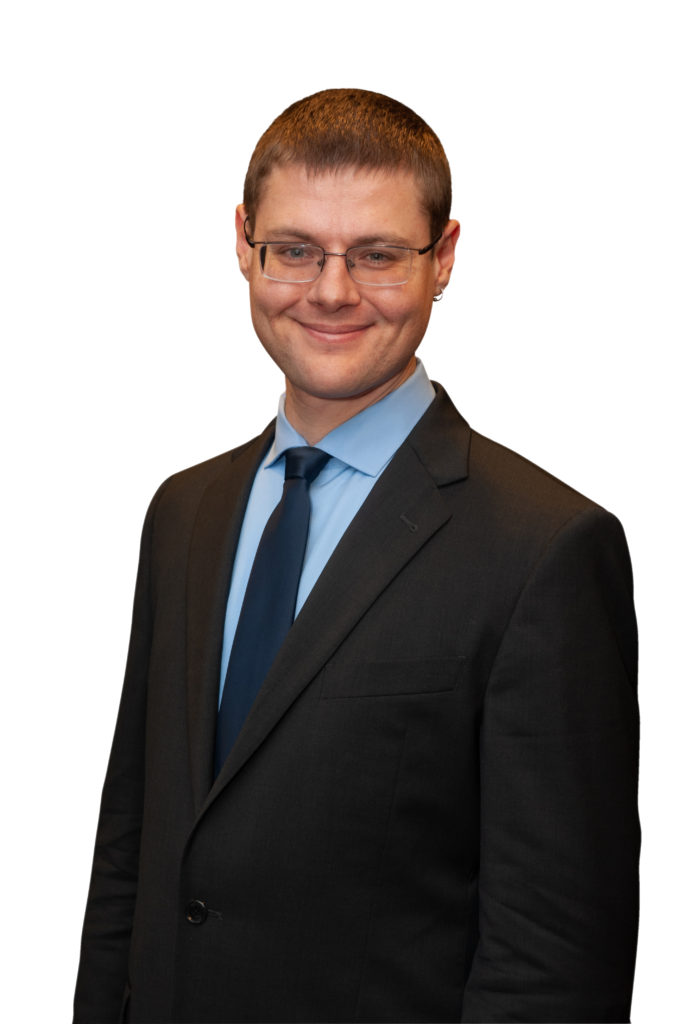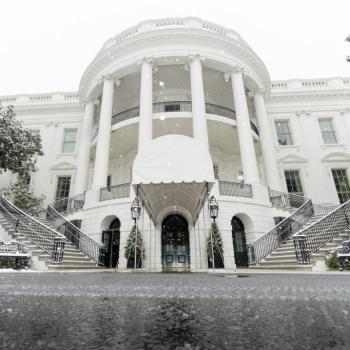 Due to strong employee resistance and turnover, Google recently backtracked from its plan to force all employees to return back to the office and allowed many to work remotely. Apple’s plan to force its staff back to the office has caused many to leave Apple and led to substantial internal opposition.
Why are these and so many other leaders forcing employees to return to the office? They must know about the extensive, in-depth surveys from early Spring 2021 (1, 2, 3, 4, 5, 6, 7, 8) that asked thousands of employees about their preferences on returning to the office after the pandemic.
If you enjoy video, here’s a videocast based on this blog:
And if you like audio, here’s a podcast based on the blog:
Or simply read onward!
All of the surveys revealed strong preferences for working from home after the pandemic at least half the time for over three-quarters of all respondents. A quarter of all respondents desired full-time remote work permanently.
Around 40-60% of all employees indicated a willingness to leave their job if it did not offer substantial remote options. Minority employees expressed an especially strong preference for remote work to escape in-office discrimination. Over three-quarters report that teleworking at least half the time after the pandemic would make them more willing to go the extra mile, have more work-life balance, feel less stressed, and be happier and more engaged. Employees, on average, are significantly more productive when working from home, according to both surveys and objective productivity data.
The majority of employers – ranging from two-thirds to three-quarters in various studies – plan for a hybrid schedule of having previously-remote employees return to the office for about half the time. That would satisfy the 60-65% of all employees who want such a hybrid schedule, as well as the 15-20% seeking full-time in-person work.
It would be a serious problem for the 20-25% who want to remain full-time remote. Many of the latter already moved out of their previous geographical areas. They structured their lives around fully-remote work forever.
Yet even more problematic is the small proportion of employers who intend to force their employees who can easily work remotely back to the office full-time. For instance, Goldman Sachs CEO David Solomon called working from home “an aberration that we’re going to correct as quickly as possible.”
Leaders frequently proclaim that “people are our most important resource.” Yet the leaders resistant to permitting telework are not living by that principle. Instead, they’re doing what they feel comfortable with, even if it devastates employee morale, engagement, and productivity, and seriously undercuts retention and recruitment, as well as harming diversity and inclusion. In the end, their behavior is a major threat to the bottom line.
The tensions of returning to the office and figuring out the most effective permanent post-pandemic work arrangements are the topic of my new book, Returning to the Office and Leading Hybrid and Remote Teams: A Manual on Benchmarking to Best Practices for Competitive Advantage. This article focuses on the blindspots causing leaders to make bad decisions on these topics.
Due to strong employee resistance and turnover, Google recently backtracked from its plan to force all employees to return back to the office and allowed many to work remotely. Apple’s plan to force its staff back to the office has caused many to leave Apple and led to substantial internal opposition.
Why are these and so many other leaders forcing employees to return to the office? They must know about the extensive, in-depth surveys from early Spring 2021 (1, 2, 3, 4, 5, 6, 7, 8) that asked thousands of employees about their preferences on returning to the office after the pandemic.
If you enjoy video, here’s a videocast based on this blog:
And if you like audio, here’s a podcast based on the blog:
Or simply read onward!
All of the surveys revealed strong preferences for working from home after the pandemic at least half the time for over three-quarters of all respondents. A quarter of all respondents desired full-time remote work permanently.
Around 40-60% of all employees indicated a willingness to leave their job if it did not offer substantial remote options. Minority employees expressed an especially strong preference for remote work to escape in-office discrimination. Over three-quarters report that teleworking at least half the time after the pandemic would make them more willing to go the extra mile, have more work-life balance, feel less stressed, and be happier and more engaged. Employees, on average, are significantly more productive when working from home, according to both surveys and objective productivity data.
The majority of employers – ranging from two-thirds to three-quarters in various studies – plan for a hybrid schedule of having previously-remote employees return to the office for about half the time. That would satisfy the 60-65% of all employees who want such a hybrid schedule, as well as the 15-20% seeking full-time in-person work.
It would be a serious problem for the 20-25% who want to remain full-time remote. Many of the latter already moved out of their previous geographical areas. They structured their lives around fully-remote work forever.
Yet even more problematic is the small proportion of employers who intend to force their employees who can easily work remotely back to the office full-time. For instance, Goldman Sachs CEO David Solomon called working from home “an aberration that we’re going to correct as quickly as possible.”
Leaders frequently proclaim that “people are our most important resource.” Yet the leaders resistant to permitting telework are not living by that principle. Instead, they’re doing what they feel comfortable with, even if it devastates employee morale, engagement, and productivity, and seriously undercuts retention and recruitment, as well as harming diversity and inclusion. In the end, their behavior is a major threat to the bottom line.
The tensions of returning to the office and figuring out the most effective permanent post-pandemic work arrangements are the topic of my new book, Returning to the Office and Leading Hybrid and Remote Teams: A Manual on Benchmarking to Best Practices for Competitive Advantage. This article focuses on the blindspots causing leaders to make bad decisions on these topics.
Why Do So Many Leaders Dislike Remote Work?
After interviewing 61 mid-level and senior leaders on this question in 12 companies which I helped develop a strategic approach to transitioning back to the office, I discovered a series of reasons for why just over a quarter felt resistant to permitting any remote work for their employees. An additional 15% accepted a hybrid model, with some reluctance, but did not want any employees working remotely full-time after COVID. A large number described a desire to return to what they saw as “normal” work life. By that they meant turning back the clock to January 2020, before the pandemic. After all, they said, once the pandemic is over, why can’t we go back to what worked well? After I dug a bit deeper on why they wouldn’t want to permit employees to work where they want and where they are most productive, these leaders shared additional reasons. A key concern for many involved personal discomfort. They wanted to see and engage with their direct reports and other staff in person, not remotely. They liked the feel of a full, buzzing office. They preferred to be surrounded by others when they work. Other reasons involve challenges specifically related to remote work. Many list concerns about deteriorating company culture as an issue. Others see growing work-from-home burnout and Zoom fatigue as major issues. They list a rise in team conflicts and deterioration of trust as serious concerns about telework. Many feel frustrated by challenges in virtual collaboration and communication, ranging from problems with technology to insufficient skills among staff. A final category of concerns relates to a lack of accountability and effective evaluation of employees.Mental Blindspots Leading to Disastrous Telework Decisions
Why are these leaders resistant to the seemingly-obvious solution: a hybrid model for most, with full-time permanent remote work for those who both want it and show high effectiveness and productivity? Unfortunately, we’re all vulnerable to dangerous judgment errors that behavioral economists and cognitive neuroscientists call cognitive biases. These mental blindspots, which stem from our evolutionary background and the structure of our neural pathways, lead to poor strategic decision-making and planning. They affect all areas of our life, from health to politics and even shopping. Fortunately, by understanding these cognitive biases and taking research-based steps to address them, we can make the best decisions, whether on telework or other business areas. Many people feel a desire to go back to the world before the pandemic. They fall for the status quo bias, a desire to maintain or get back what they see as the appropriate situation and way of doing things. Their minds flinch away from accepting the major disruption stemming from the pandemic. Unfortunately for them, with so many people having successfully worked from home for so long, the genie is out of the bottle. They’re used to it: to them, working from home is the status quo. Surveys show the vast majority adapted to it well and want to continue doing so for at least half the work week and a large minority permanently after the pandemic. The disruption happened. Yet many leaders have spent this time gnashing their teeth and seeing work from home as a “purely negative” situation, in the words of Netflix CEO Reed Hastings. To them, telework represents a deviation from the pre-pandemic status quo, to which they want to return. They’re closing their eyes to reality and ignoring what’s in front of them. A major factor in leaders wanting everyone to return to the office stems from their personal discomfort with work from home. They spent their career surrounded by other people. Sure, the leaders have their corner office. But they regularly walk the floors, surrounded by the buzz and energy of staff working. Moreover, much of their time involves meetings with other leaders. They’re extroverted and gregarious, and they like other people. Is it any wonder, given their experience, that they want to bring back the atmosphere that surrounded them their whole career? They’re falling for the anchoring bias. This mental blindspot causes us to feel anchored to our initial experiences and information. Given that their whole career focused on in-person interactions, they feel anchored to that mode of collaboration. They struggle to break the chain of that anchor. They don’t want to accept the viability of work from home as a permanent solution, rather than a forced necessity. The evidence that work from home functions well for the vast majority doesn’t cause them to shift their perspective in any significant manner. The confirmation bias offers an important explanation for this seeming incongruity. Our minds are skilled at ignoring information that contradicts our beliefs, and looking only for information that confirms them. A very common way I’ve seen confirmation bias play out is a refusal by leaders to do anonymous employee surveys on their preferences for telework vs. in-office work after the pandemic. Then, I express curiosity about their reasoning. After all, the costs of surveys are negligible, and the information is critically important. Reluctant leaders usually tell me they don’t want to do surveys because they feel confident that the large majority of their employees would rather work at home than in the office. They wave aside the fact that the large-scale public surveys show the opposite. In this refusal to do surveys, the confirmation bias is compounded by another cognitive bias, called the false consensus effect. This mental blindspot leads us to envision other people in our in-group – such as those employed at our company – as being much more like ourselves in their beliefs and values than is the actual case. Literally every time I convinced them to do the survey, they found that after the pandemic, the large majority of the workforce wanted to work from home at least half the time, and a substantial minority full-time. In fact, surveys at a couple of companies indicated that more than half wanted to work from home full-time, leaving some leaders shocked. What about the specific challenges these resistant leaders brought up related to working from home, ranging from burnout to deteriorating culture and so on? These represent serious issues. However, further inquiry on each problem revealed that the leaders never addressed these work-from-home problems strategically. They transitioned to telework abruptly as part of the March 2020 lockdowns. Perceiving this shift as a very brief emergency, they focused, naturally and appropriately, on accomplishing the necessary tasks of the organization. They ignored the social and emotional glue that truly holds companies together, motivates employees, and protects against burnout. That’s fine for an emergency, a week or two. Yet COVID lasted for over a year. So they adapted their existing ways of interacting in “office culture” to remote work. They did not make the effort to figure out strategically what kind of culture and collaboration and communication methods would work best for telework. That speaks to a cognitive bias called functional fixedness. When we have a certain perception of how systems should function, how an object should be used, or how people should behave, we ignore other possible functions, uses, and behaviors. We do this even if these new functions, uses and behaviors offer a much better fit for a changed situation, and would address our problems much better.Conclusion
The post-pandemic office will require the alignment of employer-employee expectations. However, many leaders are falling victim to mental blindspots which can wreak havoc on workplace culture. Leaders should view research data objectively and use insights wisely to build a mutually satisfying office reality after COVID.Key Takeaway
Leaders can fall prey to dangerous judgment errors which can cause them to wrongly assess their employees’ needs. Significant research shows that employees want to continue working remotely after the pandemic…> Click to tweet
Questions to Consider (please share your answers below)
- Does your view of the post-pandemic workplace match those of your employees?
- Are you willing to conduct an anonymous survey to check your organization’s thoughts on telework?
- Which next steps will you take to ensure a seamless transition to the post-pandemic workplace?
Bio: Dr. Gleb Tsipursky is an internationally-renowned thought leader in future-proofing and cognitive bias risk management. He serves as the CEO of the boutique future-proofing consultancy Disaster Avoidance Experts, which specializes in helping forward-looking leaders avoid dangerous threats and missed opportunities. A best-selling author, he wrote Never Go With Your Gut: How Pioneering Leaders Make the Best Decisions and Avoid Business Disasters (Career Press, 2019), The Blindspots Between Us: How to Overcome Unconscious Cognitive Bias and Build Better Relationships (New Harbinger, 2020), and Returning to the Office and Leading Hybrid and Remote Teams: A Manual on Benchmarking to Best Practices for Competitive Advantage (Intentional Insights, 2021). His writing was translated into Chinese, Korean, German, Russian, Polish, and other languages. He was featured in over 550 articles and 450 interviews in prominent venues. These include Fortune, USA Today, Inc. Magazine, CBS News, Business Insider, Government Executive, The Chronicle of Philanthropy, Time, Fast Company, and elsewhere. His expertise comes from over 20 years of consulting, coaching, and speaking and training for mid-size and large organizations ranging from Aflac to Xerox. It also comes from over 15 years in academia as a behavioral scientist, including 7 as a professor at Ohio State University. You can contact him at Gleb[at]DisasterAvoidanceExperts[dot]com, LinkedIn, Twitter @gleb_tsipursky, Instagram @dr_gleb_tsipursky, Medium @dr_gleb_tsipursky, and gain free access to his “Assessment on Dangerous Judgment Errors in the Workplace” and his “Wise Decision Maker Course” with 8 video-based modules.














